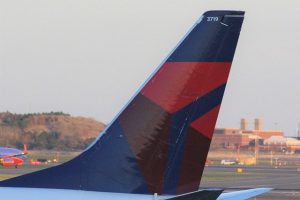 The tailplane is an important part of most fixed-wing airplanes. Also known as a horizontal stabilizer, it typically consists of a pair of horizontal extensions at the rear of an airplane’s fuselage. Horizontal stabilizers live up to their namesake by “stabilizing” airplanes during flight. What is the tailplane exactly, and how does it work?
The tailplane is an important part of most fixed-wing airplanes. Also known as a horizontal stabilizer, it typically consists of a pair of horizontal extensions at the rear of an airplane’s fuselage. Horizontal stabilizers live up to their namesake by “stabilizing” airplanes during flight. What is the tailplane exactly, and how does it work?
What Is the Tailplane?
The tailplane or horizontal stabilizer is a lifting device that’s located on the tail end of an airplane’s fuselage. Most fixed-wing airplanes have a tailplane. When looking at the tail end of a typical fixed-wing airplane, you’ll see the tailplane on the sides. It’s a pair of small and horizontal wings on the sides of the tail.
The tailplane isn’t the same as the vertical stabilizer. Vertical stabilizers, of course, are vertical, whereas tailplanes are horizontal. Nonetheless, you can find them both in the same area. The vertical stabilizer and horizontal stabilizer are both located on the tail end of an airplane’s fuselage. The difference is that the vertical stabilizer consists of a single vertical extension, whereas the tailplane consists of two horizontal extensions.
How the Tailplane Works
The tailplane is a lifting device that, like standard wings, creates lift. Each of its two extensions is a lifting surface. As air flows over and under the tailplane, it creates lift that holds the airplane in the air. Flight, of course, requires a combination of propulsion and lift. Most of an airplane’s lift is generated through its standard wings, but the tailplane generates supplementary lift as well.
In addition to creating lift, the tailplane stabilizes the airplane. Airplanes are regularly exposed to turbulence. Turbulence is simply a pocket or stream of fast-moving air in the sky. While pilots oftentimes strive to avoid areas of turbulence, this isn’t always possible. With a tailplane, though, pilots can control the airplane more easily during turbulent flight conditions. The tailplane will help to stabilize the airplane so that it doesn’t veer off course when exposed to turbulence.
The tailplane can even be controlled. Most tailplanes are designed with an elevator. An elevator is a flap that pivots up and down. From the cockpit, pilots can control the tailplane’s elevator to adjust its lift. Lowering the tailplane’s elevator will typically result in more lift being produced, whereas raising the tailplane’s elevator will result in less lift or even negative lift being produced. When landing, pilots may raise the tailplane’s elevator.



